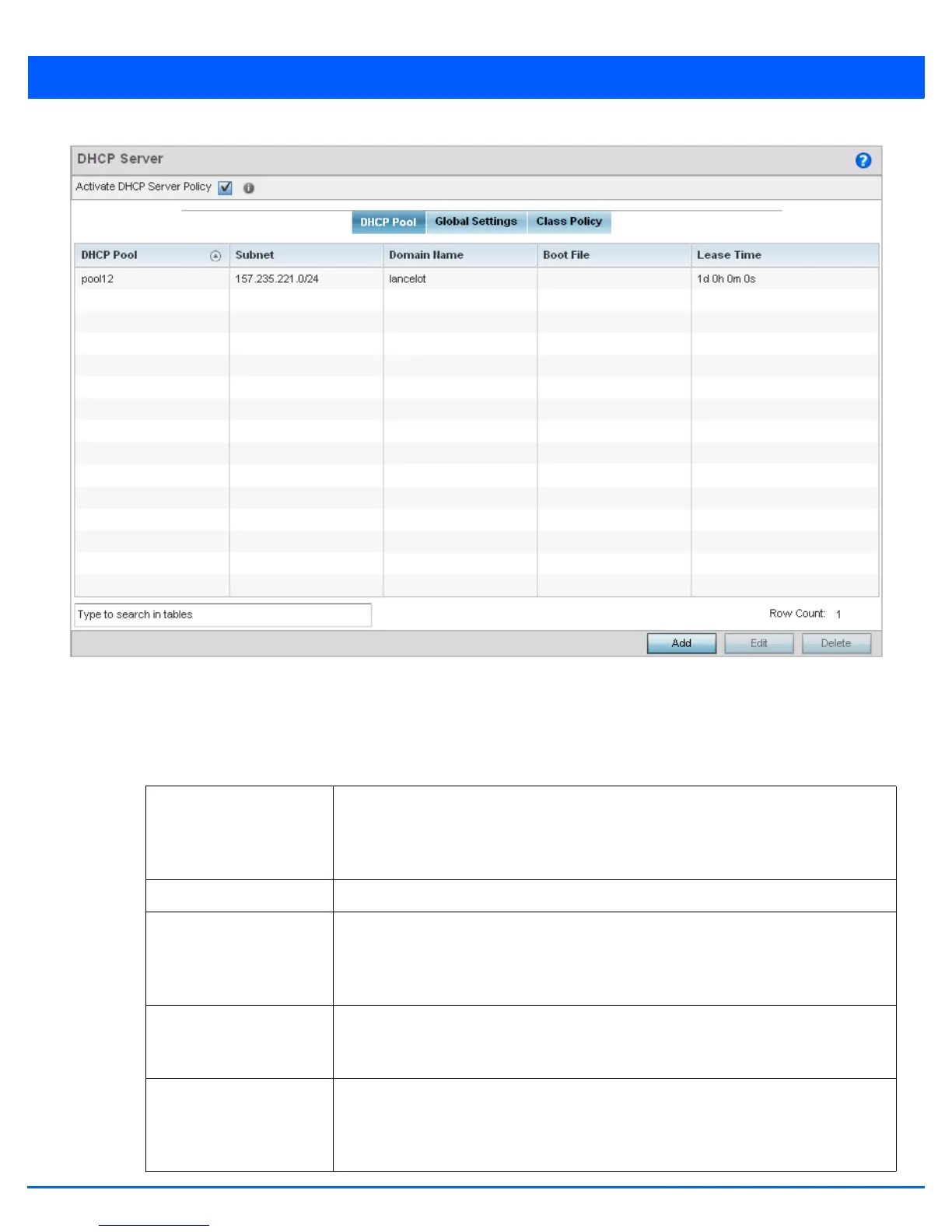Services Configuration 9 - 15
Figure 9-8 DHCP Server Policy screen - DHCP Pool tab
4. Select the Activate DHCP Server Policy option to optimally display the screen and enable the ability Add or Edit a new
policy. This option must remain selected to apply the DHCP pool configuration to the access point profile.
5. Review the following DHCP pool configurations to determine if an existing pool can be used as is, a new one requires
creation or edit or a pool requires deletion:
DHCP Pool Displays the name assigned to the network pool when created. The DHCP pool name
represents agroup of IP addresses used to assign to DHCP clients upon request. The name
assigned cannot be modified as part of the edit process. If a network pool configuration is
obsolete it can be deleted.
Subnet Displays the network address and mask used by clients requesting DHCP resources.
Domain Name Displays the domain name used with this network pool. Hostnames are not case sensitive
and can contain alphabetic or numeric letters or a hyphen. A fully qualified domain name
(FQDN) consists of a hostname plus a domain name. For example,
computername.domain.com.
Boot File Boot files (Boot Protocol) are used to boot remote systems over the network. BOOTP
messages are encapsulated inside UDP messages so requests and replies can be
forwarded. Each DHCP network pool can use a different file as needed.
Lease Time If a lease time has been defined for a listed network pool, it displays as an interval
between 1 - 9,999,999 seconds. DHCP leases provide addresses for defined times to
various clients. If a client does not use a leased address for the defined time, that IP
address can be re-assigned to another DHCP supported client.

